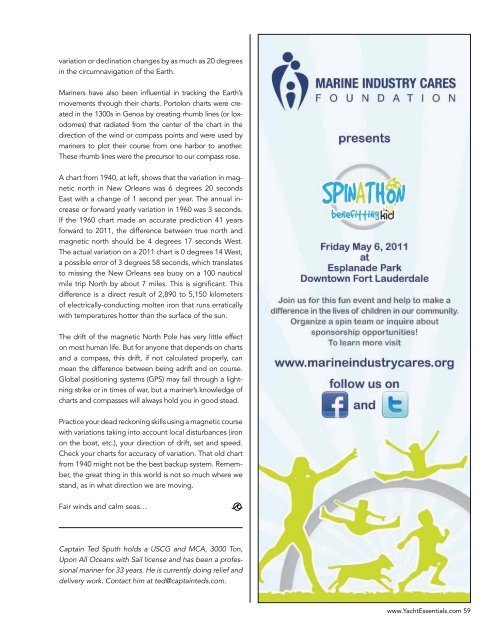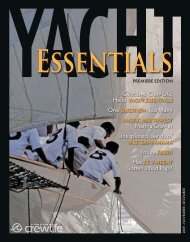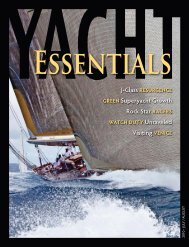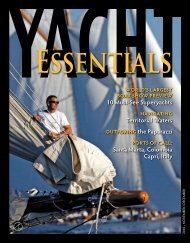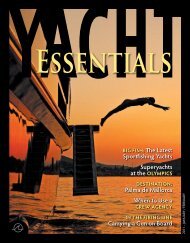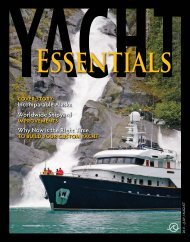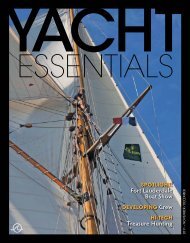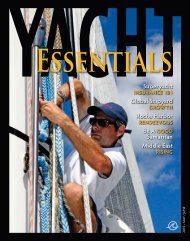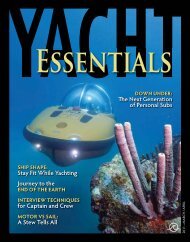photo contest - Yacht Essentials
photo contest - Yacht Essentials
photo contest - Yacht Essentials
You also want an ePaper? Increase the reach of your titles
YUMPU automatically turns print PDFs into web optimized ePapers that Google loves.
variation or declination changes by as much as 20 degrees<br />
in the circumnavigation of the Earth.<br />
Mariners have also been influential in tracking the Earth’s<br />
movements through their charts. Portolon charts were created<br />
in the 1300s in Genoa by creating rhumb lines (or loxodomes)<br />
that radiated from the center of the chart in the<br />
direction of the wind or compass points and were used by<br />
mariners to plot their course from one harbor to another.<br />
These rhumb lines were the precursor to our compass rose.<br />
A chart from 1940, at left, shows that the variation in magnetic<br />
north in New Orleans was 6 degrees 20 seconds<br />
East with a change of 1 second per year. The annual increase<br />
or forward yearly variation in 1960 was 3 seconds.<br />
If the 1960 chart made an accurate prediction 41 years<br />
forward to 2011, the difference between true north and<br />
magnetic north should be 4 degrees 17 seconds West.<br />
The actual variation on a 2011 chart is 0 degrees 14 West,<br />
a possible error of 3 degrees 58 seconds, which translates<br />
to missing the New Orleans sea buoy on a 100 nautical<br />
mile trip North by about 7 miles. This is significant. This<br />
difference is a direct result of 2,890 to 5,150 kilometers<br />
of electrically-conducting molten iron that runs erratically<br />
with temperatures hotter than the surface of the sun.<br />
The drift of the magnetic North Pole has very little effect<br />
on most human life. But for anyone that depends on charts<br />
and a compass, this drift, if not calculated properly, can<br />
mean the difference between being adrift and on course.<br />
Global positioning systems (GPS) may fail through a lightning<br />
strike or in times of war, but a mariner’s knowledge of<br />
charts and compasses will always hold you in good stead.<br />
Practice your dead reckoning skills using a magnetic course<br />
with variations taking into account local disturbances (iron<br />
on the boat, etc.), your direction of drift, set and speed.<br />
Check your charts for accuracy of variation. That old chart<br />
from 1940 might not be the best backup system. Remember,<br />
the great thing in this world is not so much where we<br />
stand, as in what direction we are moving.<br />
Fair winds and calm seas…<br />
Captain Ted Sputh holds a USCG and MCA, 3000 Ton,<br />
Upon All Oceans with Sail license and has been a professional<br />
mariner for 33 years. He is currently doing relief and<br />
delivery work. Contact him at ted@captainteds.com.<br />
www.<strong>Yacht</strong><strong>Essentials</strong>.com 59


